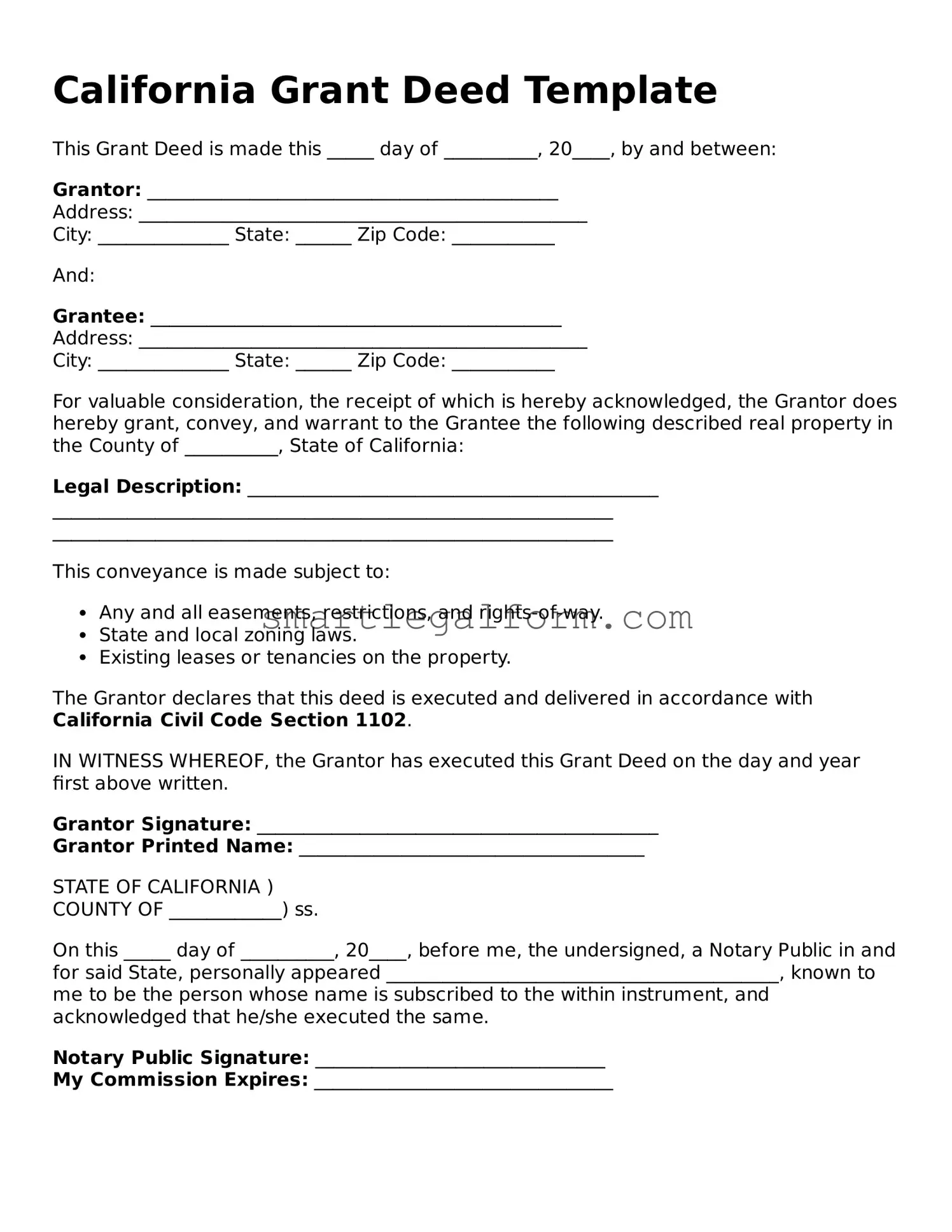California Grant Deed Template
This Grant Deed is made this _____ day of __________, 20____, by and between:
Grantor: ____________________________________________
Address: ________________________________________________
City: ______________ State: ______ Zip Code: ___________
And:
Grantee: ____________________________________________
Address: ________________________________________________
City: ______________ State: ______ Zip Code: ___________
For valuable consideration, the receipt of which is hereby acknowledged, the Grantor does hereby grant, convey, and warrant to the Grantee the following described real property in the County of __________, State of California:
Legal Description: ____________________________________________
____________________________________________________________
____________________________________________________________
This conveyance is made subject to:
- Any and all easements, restrictions, and rights-of-way.
- State and local zoning laws.
- Existing leases or tenancies on the property.
The Grantor declares that this deed is executed and delivered in accordance with California Civil Code Section 1102.
IN WITNESS WHEREOF, the Grantor has executed this Grant Deed on the day and year first above written.
Grantor Signature: ___________________________________________
Grantor Printed Name: _____________________________________
STATE OF CALIFORNIA )
COUNTY OF ____________) ss.
On this _____ day of __________, 20____, before me, the undersigned, a Notary Public in and for said State, personally appeared __________________________________________, known to me to be the person whose name is subscribed to the within instrument, and acknowledged that he/she executed the same.
Notary Public Signature: _______________________________
My Commission Expires: ________________________________
